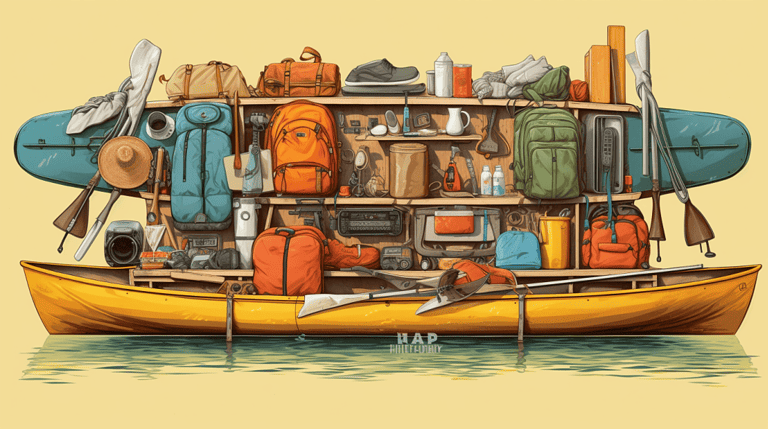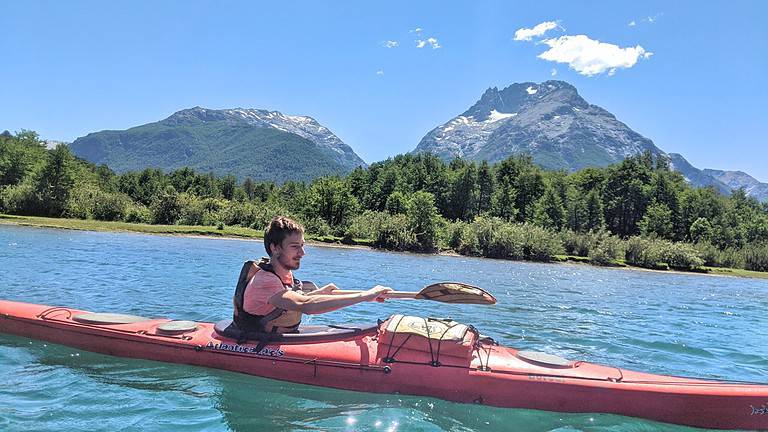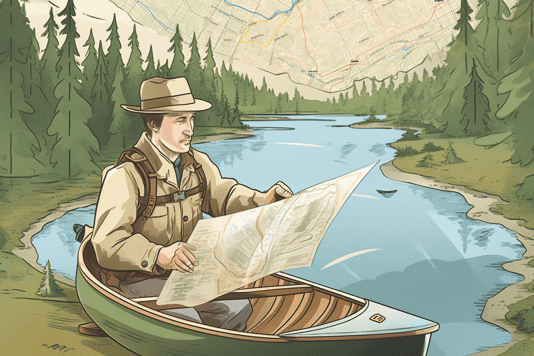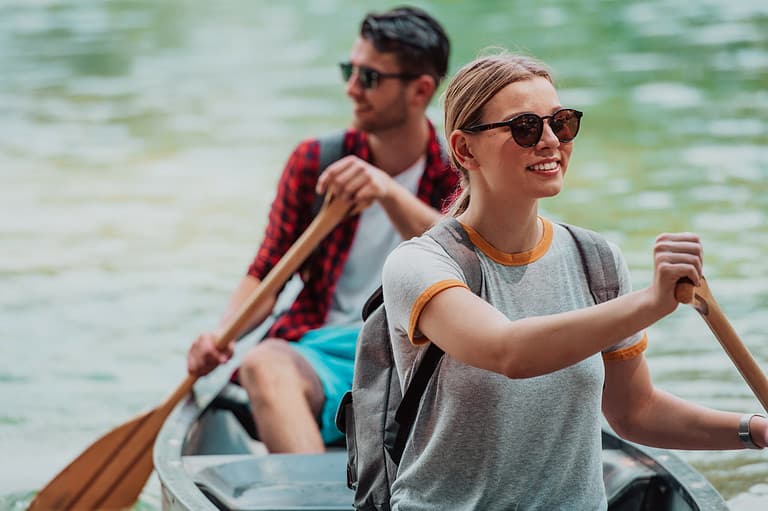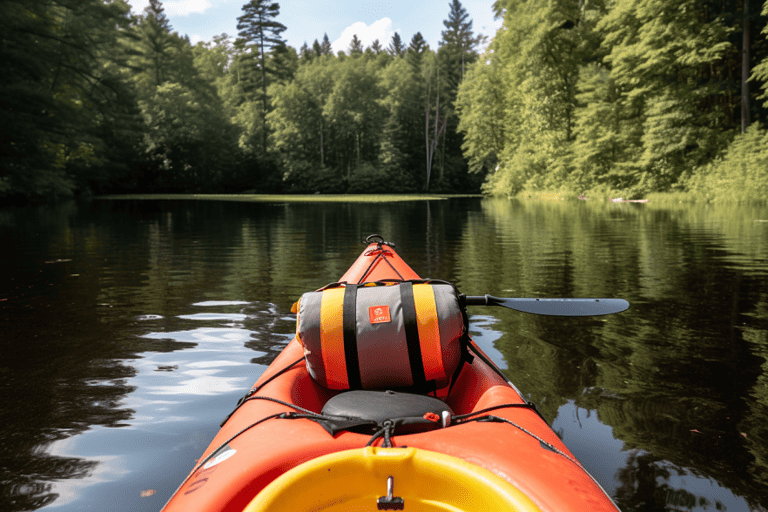The Best Beginners Guide to Canoeing Tips And Tricks
Are you a novice canoeist yearning to elevate your skills to new heights? There are some basic canoeing tips and tricks we will go over in this post that will provide canoeing tips to make your experience more enjoyable. Perhaps you’re a seasoned paddler in pursuit of fresh insights and techniques to take your canoeing game to the next level. No matter your experience level, mastering the fundamentals is an indispensable foundation for any triumphant canoe trip. From gracefully navigating rapids to packing your gear with the utmost efficiency, there exists a treasure trove of essential techniques that every canoeist should have in their arsenal.
In this comprehensive guide, we present a collection of invaluable tips and tricks that will propel your canoeing prowess to unparalleled heights. Whether you’re embarking on a short-day excursion or an extended expedition, these practical strategies will empower you to maximize the full potential of your time on the water. So, grasp your paddle with determination and embark on a journey of enlightenment as we delve into a treasure troveof expert advice, meticulously crafted to transform you into a truly exceptional canoeist.
Prepare to unlock the secrets of impeccable paddle strokes, masterful maneuvers, and the art of reading the water. Gain insights into efficient gear packing, route selection, and navigating challenges with finesse. Allow these time-tested tips and tricks to serve as your compass, guiding you toward a remarkable canoeing experience that transcends expectations.
Armed with this wealth of knowledge, you’re ready to embark on a transformational voyage—a journey that will unlock new horizons, deepen your connection with nature, and ignite an everlasting passion for the art of canoeing. So, heed the call of the water, embrace the thrill of exploration, and let the adventure unfold as you embrace the path to becoming an extraordinary canoeist.
Key Takeaways
- How to Canoe Solo
- Proper paddling techniques and water reading skills are crucial for safe and enjoyable canoeing.
- Choosing the best route and portaging technique depends on distance, terrain, and obstacles.
- Mastering fundamental canoeing skills such as paddle strokes and leaning into turns is important for navigating rapids.
- Proper preparation, including assessing risks, being aware of surroundings, and checking weather forecasts, is key for a successful and safe canoeing trip.
canoeing tips and Tricks for Master the Basics
To truly excel at canoeing, it is crucial to establish a strong foundation by mastering the essential skills. Underestimating the significance of these fundamental abilities would be a grave mistake. Paddle techniques and balancing skills serve as the pillars of success in canoeing. So, let’s delve into the realm of expertise and explore these key components that will elevate your canoeing prowess to new heights.
First and foremost, let’s unravel the secrets of paddle techniques. Understanding and implementing proper paddling methods will empower you to maintain control and propel yourself efficiently through the water. Engage your core muscles as you paddle, ensuring your arms remain straight yet relaxed. This harmonious combination unleashes maximum power and endurance. Moreover, immerse your paddle vertically into the water, employing a fluid and seamless motion that propels you forward gracefully.
The art of balancing is another vital skill to conquer in the realm of canoeing. A well-balanced canoe enhances maneuverability and shields you from the perils of capsizing. Remember to distribute your weight evenly on both sides of the boat, maintaining an upright position with impeccable posture. Practice the art of weight shifting, deftly adjusting your balance for smooth turns or changes in direction. With these foundational skills firmly embedded in your repertoire, you are ready to navigate rapids with the confidence and finesse of a true professional!
By devoting time and effort to honing these fundamental skills, you lay a solid groundwork that will propel you toward triumph in the canoeing world. So, embrace the journey of mastering these techniques, unlocking a realm of endless possibilities as you glide through the water with absolute grace and expertise.
When it comes to maneuvering through rapids, acquiring a deep understanding of their dynamics is paramount. You must delve into the intricacies of how rapids form, how they evolve, and the potential obstacles they present. Equally crucial is the art of reading the water—an essential skill that entails comprehending the current, discerning the presence of eddies, and identifying areas where potential hazards may lurk. These abilities are the keys that unlock your capacity to navigate rapids safely and with confidence.
Furthermore, to navigate even the most challenging of rapids with ease, it is vital to master specialized techniques such as ferrying and portage. These techniques empower you to adapt to the ever-changing nature of rapids and skillfully maneuver through their tumultuous waters. By honing your skills in ferrying, you can expertly traverse the river by angling your canoe or kayak against the current, allowing you to maintain control and navigate to your desired destination. Additionally, portage is an invaluable technique that enables you to elegantly launch over obstacles like rocks or drops elegantly, ensuring a smooth passage through treacherous sections of the rapids.
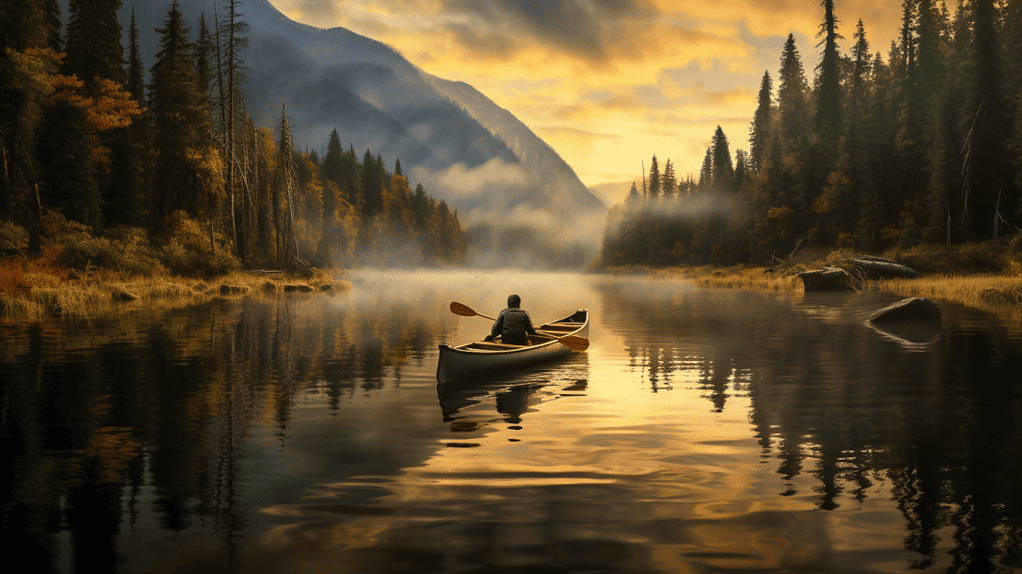
By delving deep into the knowledge of rapids, refining your ability to read the water, and mastering specialized techniques, you transform into a skilled navigator who dances harmoniously with the powerful currents. The rapids that once appeared daunting now become exhilarating opportunities for triumph and adventure. So, embrace the journey of understanding, practice your skills, and unlock the gateway to conquering rapids with finesse and grace.
Understanding Rapids
Navigating rapids can be a wild ride, so it’s important to keep your eyes peeled for any sudden changes in the water’s behavior that could throw you off course. Make sure to wear all necessary safety equipment, such as a helmet and life jacket. Before entering the rapids, take some time to observe the current and read the patterns of waves. This will give you an idea of what lies ahead and help you plan your route accordingly.
When approaching rapids, remember that water always takes the path of least resistance. Areas with smoother flow usually indicate deeper channels while churning water often means shallow rocks or obstructions are present. Be aware of eddies which are swirling pockets of calm water behind obstacles such as rocks. These can create dangerous whirlpools that can capsize even experienced paddlers.
Understanding how to read the water is crucial for navigating rapids safely and efficiently. Observing currents and noting patterns in wave formations will make you better equipped to anticipate challenges and maneuver through them confidently.
How to Read the Water
Reading the water is like deciphering a secret code that reveals hidden obstacles and safe passages through rapids. Water reading techniques are crucial for any canoeist who wants to navigate safely downriver. The first technique is to observe the water’s flow patterns. Look for areas where the water is calm, as these indicate slower currents and potentially safer routes through rapids.
The second observation technique involves looking at the surface of the water. Pay attention to changes in color or texture, as these may indicate underwater hazards such as rocks or submerged logs. Additionally, keep an eye out for waves breaking over rocks; this can be a sign of shallow waters where paddling may be challenging. By mastering these observation skills, you’ll be better equipped to identify potential dangers and make informed decisions while navigating rapids.
As important as it is to read the water, there are also techniques for navigating rapids that every canoeist should know. These include using your paddle strokes to steer effectively, learning how to brace against sudden movements of the boat, and knowing when to lean into turns versus leaning away from them. With practice and knowledge of both water reading techniques and navigation strategies, you’ll become a skilled canoeist capable of confidently tackling even the most challenging rapids.
To navigate rapids like a pro, you’ll need to master various whitewater skills and paddle techniques. One of the most important aspects is using your paddle strokes effectively. This means knowing when to use forward strokes, draw strokes, or even backstrokes to make quick turns and avoid obstacles. It also involves mastering the technique of high brace stroke, which helps you stay upright in turbulent water.
Another crucial factor in navigating rapids is understanding how to lean into turns. As you approach a rapid, keep your weight centered and be prepared to lean into the turn as soon as you enter it. You can do this by shifting your weight towards the inside of the turn while keeping your upper body straight and stable. With practice, you’ll learn how much to lean for different types of rapids and how to adjust your technique based on changes in water conditions.
Now that you’ve learned some techniques for navigating rapids with ease, let’s move on to portaging your canoe without any hassle.
Portage Your Canoe
When your canoeing adventure encounters an obstacle that cannot be traversed by water, the time for portaging arises. Portaging entails the task of gracefully carrying your canoe and gear across land to reach another body of water. To accomplish this feat with finesse and efficiency, there exist various techniques that you can employ for carrying your canoe, each serving its unique purpose. The two prominent methods include the yoke carry and the solo balance carry, offering you flexibility and control during the portaging endeavor.
Choosing the optimal route for portaging is also a vital consideration that should not be overlooked. Factors such as distance, terrain, and obstacles play a crucial role in determining the most suitable path to navigate during the portaging process. It is essential to carefully evaluate these elements to ensure a seamless transition from one body of water to another, maximizing both convenience and safety.
By arming yourself with the knowledge of effective canoe-carrying techniques and diligently selecting the most favorable portaging route, you embark on a journey of seamless transitions, where no obstacle can impede your canoeing aspirations. Embrace the challenges that lie ahead, and with each successful portage, revel in the triumph that accompanies conquering both land and water in pursuit of unforgettable experiences.
What is Portaging?
Picture yourself standing at the edge of a dense forest, your canoe on one shoulder and a heavy pack on the other as you prepare to embark on a portage. Portaging is the act of carrying your canoe and gear over land between two bodies of water. This practice dates back centuries to when indigenous peoples used it as a means of transportation through their territories. Today, portaging is still an essential skill for any canoeist, whether they’re navigating whitewater rapids or exploring remote lakes.
There are various types of portaging techniques that can be utilized depending on the terrain and There are various types of portaging techniques that can be utilized depending on the terrain and distance being covered. The most common method is the single carry, where both the canoe and gear are carried in one trip. However, this can be physically taxing if the distance is long or if there are steep inclines involved. Another technique is double-carrying, where you make two trips – one with just your gear, then another with just your canoe. Lastly, there’s lining which involves pulling or pushing your canoe along shallow waters instead of carrying it over land. Understanding these different techniques will help you choose the best method for each individual portage.
Moving forward into ‘techniques for carrying your canoe’, let’s explore ways to make portaging easier and more efficient.
Techniques for Carrying Your Canoe
Now that you have familiarized yourself with the concept of portaging, it’s time to delve into the art of proper canoe carrying. Carrying a canoe may initially appear as a formidable task, but fear not! With the right techniques and equipment at your disposal, this feat can be easily accomplished. The key lies in mastering the principles of posture and weight distribution.
As you prepare to lift the canoe, it is crucial to maintain a straight and aligned back, utilizing the strength of your legs for support. Once the canoe gracefully rests upon your shoulders, ensure that the weight is evenly distributed between both sides of your body. This equitable distribution prevents strain on a single side and facilitates a harmonious sense of balance as you traverse your path. For additional assistance, you may opt to employ a canoe carrier, a remarkable tool designed to evenly distribute the weight across your back, granting you enhanced comfort and ease.
When it comes to selecting the most suitable carrier for your needs, it ultimately boils down to personal preference and physical capabilities. Various options exist, each catering to different preferences and needs. Among the popular choices are yokes, shoulder pads, and carts, each offering its unique advantages. To make an informed decision, I encourage you to explore and experiment with different carriers, allowing yourself the opportunity to discover the one that harmonizes perfectly with your requirements. Once you have mastered the art of carrying your canoe, it’s time to embark on the next step: selecting the optimal route for your upcoming adventure!
By honing your canoe carrying skills, you have unlocked a new level of confidence and capability. So, seize this knowledge and embark on your journey with a sense of assuredness, knowing that you possess the expertise to navigate both the rugged terrains and tranquil waters that lie ahead.
How to Choose the Best Route
To make the most of your canoeing adventure, it’s important to select the optimal route for your skill level and interests. Researching rivers is a great place to start when choosing a route. Look into the water conditions, rapids, and any potential hazards that may be present along the way.
Another key factor in selecting a route is consulting with locals. They can provide valuable insight on which routes are best suited for your abilities and preferences. Additionally, they may have knowledge about hidden gems along certain routes that you wouldn’t want to miss out on. By taking these steps to choose the right route, you’ll ensure an enjoyable and safe canoeing experience. As you prepare for your journey, remember to pack efficiently so you can focus on enjoying the scenery without worrying about excess baggage.
Pack Efficiently
As you prepare for your canoe trip, remember to pack efficiently by placing heavier items closer to the center of the boat and lighter items towards the ends. This will help balance the weight in your canoe and make it easier to maneuver through the water. Maximizing space is also key when packing for a canoe trip, so consider using compression bags or vacuum-sealed bags to reduce the size of bulky items such as sleeping bags or clothing.
To further assist with efficient packing, refer to this table below:
| Item | Location | Reason |
| Heavy gear (e.g. stove, fuel) | Center of boat | Balances weight distribution |
| Tents, sleeping bags | Heavy gear (e.g., stove, fuel) | Lightweight gear that can fit into smaller spaces |
| Food and cooking utensils | Opposite end of heavy gear | Distributes weight and allows for easy access during meal times |
Remember that packing efficiently maximizes space and helps ensure a safer voyage. Speaking of safety precautions…
…make sure to properly secure all items to prevent shifting or falling during travel.
Safety Tips
When it comes to canoeing, safety should always be your top priority. To ensure that you stay safe on the water, there are a few key tips you should keep in mind. First and foremost, always wear a life jacket. Additionally, make sure to be aware of your surroundings and know your limits and abilities so that you can avoid accidents and stay out of harm’s way.
Wear a Life Jacket
Make sure you always have a life jacket on before getting into the canoe – it’s not only a safety requirement but also a smart decision to keep you safe in case of any unexpected mishap. The importance of wearing a life jacket cannot be emphasized enough. It can literally save your life! A properly fitting life jacket is essential for it to work effectively. When purchasing or renting one, make sure it fits snugly around your torso and doesn’t ride up toward your chin when you raise your arms above your head.
To further ensure that you are prepared for any situation, here are some tips for using a life jacket while canoeing:
- Always wear the life jacket zipped up and buckled
- Make sure the straps are adjusted correctly so that it fits snugly
- The shoulder straps should fit tightly over each shoulder
- The waist strap should be tight so that the jacket doesn’t rise up over your head when in water
- Choose a brightly colored or reflective one to increase visibility
Now that you know how important it is to wear a properly fitting life jacket and how to use one effectively, let’s move on to another crucial tip: being aware of your surroundings.
Be Aware of Your Surroundings
Hey, you! Don’t be clueless about what’s going on around you while paddling – pay attention to your surroundings and avoid any potential hazards. When canoeing, it’s important to keep an eye out for wildlife encounters such as birds, fish or even larger creatures like alligators or bears. Be aware of their natural habitats and try to steer clear of them if possible. Keep in mind that certain weather conditions may also increase the likelihood of seeing wildlife, so take extra precautions during those times.
In addition to wildlife encounters, always stay alert when it comes to weather conditions. Check the forecast before heading out and keep an eye on changes throughout your trip. Sudden storms can create dangerous waves and strong winds can easily push you off course. Always wear appropriate clothing and bring rain gear just in case. Being aware of your surroundings not only keeps you safe but also helps preserve the environment around you. So take a deep breath, enjoy the scenery and paddle with purpose – just don’t forget to stay vigilant at all times!
Remember that knowing your limits and abilities is key to becoming a better paddler.
Know Your Limits and Abilities
It’s important to understand your own limits and abilities before venturing out onto the water. Canoeing can be physically demanding, and it’s crucial to assess your limitations beforehand. This will not only ensure a safer experience but also allow you to fully enjoy the beauty of nature around you.
One way to assess your physical capabilities is by testing yourself in calm waters close to shore. Practice paddling in different conditions, such as against the wind or with a strong current. Pay attention to how your body feels during these tests, and be honest with yourself about any discomfort or strain you may experience. Proper preparation is key – stretch before getting into the canoe, wear appropriate clothing and bring enough water and snacks for energy throughout the trip. By knowing your limits and preparing accordingly, you’ll have a much more enjoyable time on the water.
| Preparation | What to do |
| Stretching | Warm up muscles before getting into canoe |
| Clothing | Wear comfortable clothes that are easy to move in |
| Water & Snacks | Bring enough for energy throughout trip |
Assessing limitations can also refer to mental preparedness. If you’re new to canoeing or unsure of your abilities, start with shorter trips and gradually work up to longer ones. Don’t push yourself too hard – remember that safety should always come first. It’s also important to consider external factors such as weather conditions or unexpected obstacles while on the water. Being aware of potential risks will help prevent accidents from occurring.
In summary, knowing your limits and abilities is essential when it comes to canoeing safely and enjoyably. Assess both your physical and mental capabilities beforehand through proper preparation and practice in calm waters near shore before heading out on longer trips. Remember that safety always comes first – don’t hesitate to turn back if conditions become unsafe or overwhelming for you.
Conclusion
Congratulations! You’ve learned the basics of canoeing and even mastered some advanced techniques. Now it’s time to put your knowledge into practice and explore the beautiful waterways around you.
But before you embark on your next adventure, let’s review some important safety tips. According to a recent study by the US Coast Guard, 83% of boating fatalities occur due to drowning, and 82% of those victims were not wearing life jackets. Always wear a properly fitting life jacket when canoeing, regardless of your swimming ability or the calmness of the water.
In addition, be sure to check weather reports before heading out on the water and avoid going out in stormy or excessively windy conditions. And remember, never drink alcohol while operating a canoe – it impairs judgment and reaction time, increasing the likelihood of accidents.
By following these safety tips along with mastering basic techniques like paddling strokes and navigating rapids, you’ll have an enjoyable and safe experience while exploring nature from the peaceful vantage point of a canoe. Happy paddling!


